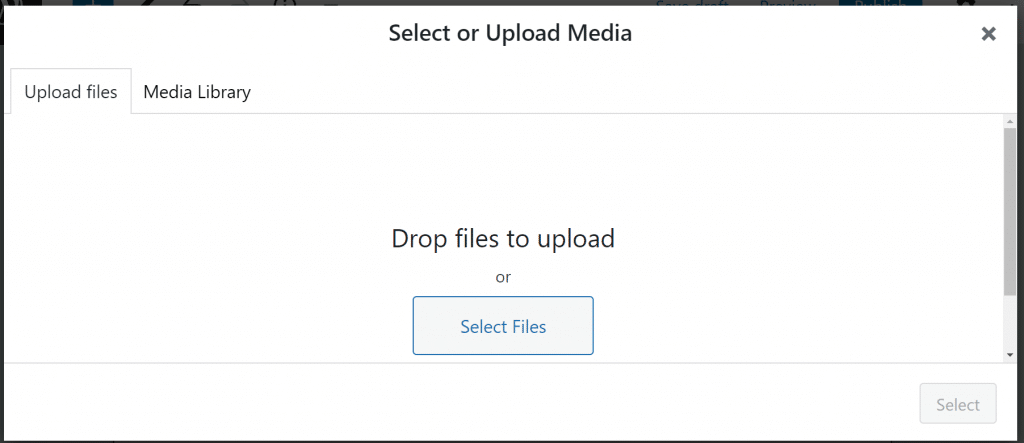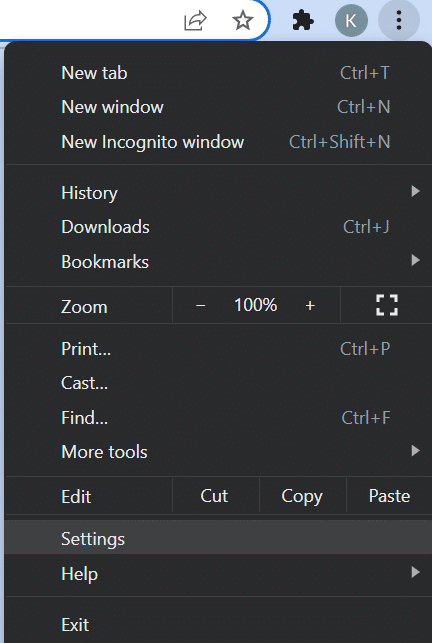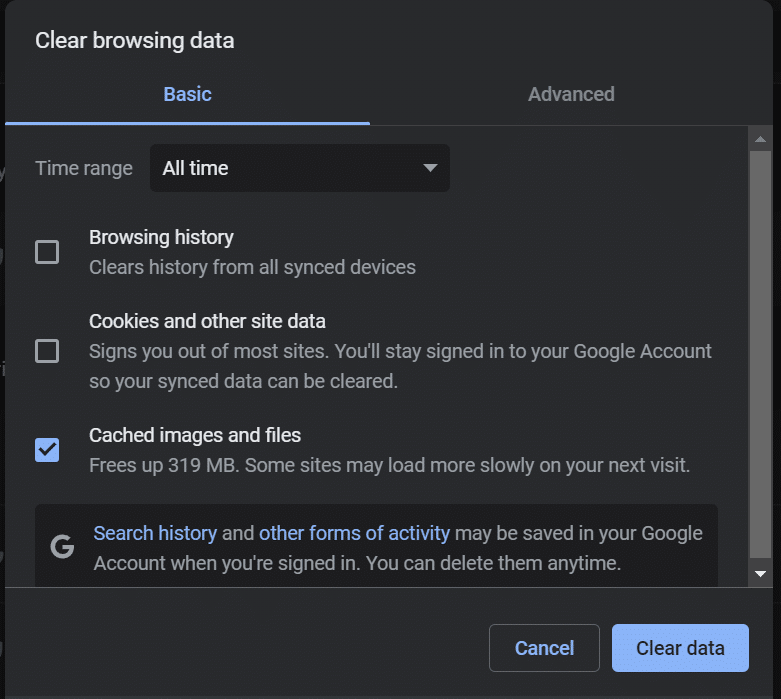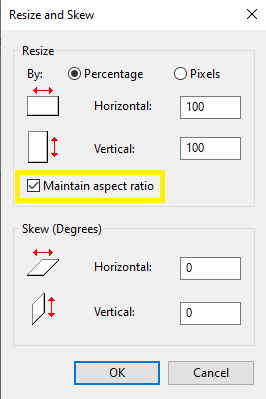It can be frustrating to receive an image upload HTTP error when trying to add photos to your WordPress site. Since there are many potential causes for this issue, you might not know how to fix it.

Fortunately, the image upload HTTP error is common when adding files to the WordPress Media Library. In most cases, you can quickly resolve it. You can try a few methods, including simple checks in your browser and tweaks from your WordPress dashboardIn WordPress, the Dashboard is a central hub for managing a website's content and settings. It is the first sc... More.
In this postA post is a type of content in WordPress, a popular open-source content management system used for creating an... More, we’ll explore what causes the image upload HTTP error in WordPress. We’ll then explain the six methods you can use to resolve the problem so that you can get back to crafting your blog posts. Let’s get started!
- What Does Image Upload HTTP Error Mean?
- What is the most common WordPress HTTP error?
- An Introduction to the Image Upload HTTP Error in WordPress
- How to Fix the Image Upload HTTP Error in WordPress (6 Methods)
- What Should You Do If The Issue Isn’t Resolved By Adding Code Or Changing Options Related To Mod_Security?
- How Can You Solve The Image Upload Issue Caused By Mod_Security?
- How Can Having Incorrect File Permissions In The WordPress Uploads Folder Lead To Image Upload Errors?
- What Permissions Are Recommended For Directories And Subdirectories Within The Uploads Folder?
- How do I prevent HTTP errors in WordPress?
- Conclusion: Fixing Image Upload HTTP Error
What Does Image Upload HTTP Error Mean?
An HTTP error is a status code sent from a web server to a client (like your web browser) indicating an issue with the request made by the client. These errors occur during the communication between your browser and the server, signaling that the server couldn’t successfully handle the request. Common HTTP errors include “404 Not Found,” “500 Internal Server Error,” and “403 Forbidden,” each representing a different type of problem affecting your web experience.
When you encounter an HTTP error, it’s a sign that something went wrong, and the server couldn’t fulfill the request as expected. Understanding these errors can help diagnose and resolve issues more efficiently, ensuring smoother browsing and improved website performance.
What is the most common WordPress HTTP error?
The most common HTTP error encountered in WordPress is the 500 Internal Server Error. This frustrating issue usually stems from server-related problems, conflicts with themesA WordPress theme is a set of files that determine the design and layout of a website. It controls everything ... More or plugins, or corrupted files. Identifying the root cause is essential to resolve this error and get your WordPress site back up and running smoothly.
An Introduction to the Image Upload HTTP Error in WordPress
The image upload HTTP error can happen when something goes wrong with adding photo or video files to the WordPress Media LibraryThe Media Library in WordPress is a feature that allows users to easily upload and manage media files such as ... More:

Unfortunately, it can be challenging to pinpoint the exact cause of the error because it can be vague. Usually, it happens when the file you’re trying to upload doesn’t meet the Media Library’s specifications.
The image upload HTTP error could stem from an incorrect file format, file size, or a conflict with a pluginA plugin is a software component that adds specific features and functionality to your WordPress website. Esse... More. The issue could also lie with a broader PHP problem, where settings, such as memory limitations, cause conflicts with WordPress functions.
How to Fix the Image Upload HTTP Error in WordPress (6 Methods)
It can be unclear exactly why you are receiving the image upload HTTP error. However, here are six methods you can use to resolve the problem!
1. Check if the Issue Is Temporary
The HTTP error can sometimes be caused by low server resources and unusual traffic spikes. These factors typically have fixed limits on most WordPress hosting servers.
If you try to upload an image when your website is already using many resources, you might trigger the HTTP error. Fortunately, there’s an easy fix.
You should first try waiting a few minutes and then refresh your pageIn WordPress, a page is a content type that is used to create non-dynamic pages on a website. Pages are typica... More. You can then upload your file again to confirm it’s not just a temporary issue. If this method doesn’t work, you’ll need to try the next strategy.
2. Clear Your Browser Cache
Your browser cache stores temporary files from websites you have previously visited, including your own. When you go to the site again, your browser can load it more effectively because it doesn’t have to retrieve the data from scratch.
However, sometimes your cache might contain outdated files. This can cause issues such as the image upload HTTP error. You’ll need to clear out these files so that your browser will reload your website.
To empty your cache in Google Chrome, locate the icon with three dots in the top right of the window and navigate to Settings:

A new window will appear with your settings options. Click on Security and Privacy and then select Clear browsing data:

You can then tick the Cached images and files box. Change the time range to All time so that you clear everything in storage:

Just hit Clear data and your cache will be emptied. If you use a different browser, you can follow a simple guide to clearing data in Mozilla Firefox, Safari, and more.
At this point, you might also consider checking to see if your browser is causing the image upload HTTP error. Try switching to Firefox or Microsoft Edge and uploading your file again.
3. Image Upload HTTP Error: Change the File Name
The WordPress Media Library has specific file requirements. If your image or video does not meet these restrictions, it could cause issues. Fortunately, there are a couple of common fixes, including renaming or resizing your image file.
You can try renaming your image, particularly if it contains special characters such as apostrophes, semicolons, or international language symbols. WordPress doesn’t let you change file names after uploading them, so you will have to rename your image locally and then reupload it.
Resizing the file may also solve your issue. There are various ways to resize and optimize your images, but we’ll demonstrate the process using Windows Paint.
Open your image within the Paint program and select the Resize tool from the top toolbar:

This will open a pop-up window that will enable you to manually change your file’s size. You can either decrease the image by percentage or manually reduce the pixel size.
We also advise keeping the Maintain aspect ratio box checked so that your image proportions stay equal and don’t appear skewed:

Using a Mac, you can also quickly resize an image. All you need to do is open the file in Preview, select Tools and then Adjust Size.
4. Temporarily Deactivate Plugins or Change Your Theme
Plugins can sometimes interfere with your site’s performance. Their software might slow down your website. Moreover, plugin code might conflict with other processes in WordPress, causing the image upload HTTP error.
You can try temporarily deactivating your plugins. Then, you can test them to see if they’re causing your upload error.
First, navigate to your WordPress admin dashboard and click on Plugins > Installed Plugins in the left-hand navigation bar:

You can then select the check box at the top of your plugin list to choose everything at once:

Select Deactivate from the dropdown and then hit Apply:

Now that you have temporarily disabled all your plugins, you can try reuploading your media file. If that solves the issue, you may want to investigate further by reactivating each plugin one by one.
Try uploading an image after each reactivation until you can recreate the error. This process will identify your troublesome plugin! You can then delete this tool from your website and look for an alternative.
Like misbehaving plugins, individual theme settings could also cause image upload issues. You can try switching to a default WordPress theme such as Twenty Twenty-One and reuploading the image to see if it works correctly:

You may find after changing themes, you can upload your media file. If so, you might need to look for a different theme for your website or keep the default one. You may also consider contacting the theme developer to see if they can find a fix.
5. Increase Your PHP Memory Limit
Sometimes the image upload HTTP error happens because there is not enough memory to complete the background process successfully. Since PHP is the scripting language used in WordPress processes, you might consider increasing the amount of PHP memory.
To increase your website’s PHP memory limit, you can use a File Transfer Protocol (FTP) program such as FileZilla. It enables you to manage the underlying files of your WordPress site.
Once you have opened the FTP program and set up your credentials, locate the wp-config.php file by clicking on your website’s root folder. The file is usually located in public_html along with others, such as /wp-admin/.

Once you find the wp-config.php file, consider making a local backup of it. This step can help you recover your document if anything goes wrong. You can make a backup by right-clicking on and selecting Create directory within the Local site window to create a new folder.
Drag the file to your chosen location, and Filezilla will create a copy for you. Once you’re done, right-click on the wp-config.php file, then hit View/Edit to open it in your text editor:

You can then add the following line of code to your file:
define( 'WP_MEMORY_LIMIT', '256M' );We’re increasing the PHP memory limit to 256 MB in our example. Save and reupload your file to your WordPress site when you’re done.
6. Update Your PHP Version
Finally, you might want to confirm that your WordPress website is using the most up-to-date PHP version. Outdated PHP could trigger various issues, including the image upload HTTP error.
There are different ways to check your PHP version, such as using the Display PHP Version plugin. This tool will show your PHP version in your WordPress dashboard:

Any version below the WordPress recommended PHP 7.4 might cause issues. However, you’ll need to update this software at a server level. We recommend reaching out to your web host for support since the process may differ depending on your provider.
If the image upload HTTP error persists despite following these steps, the issue may be more complex. While this can be frustrating, consider exploring alternative troubleshooting methods that could uncover less obvious causes. For example, check for file permission inconsistencies or temporarily disable security plugins that might be affecting uploads. If these measures do not resolve the issue, we recommend contacting your web host for further assistance, as the problem may reside at the server level.”
This approach ensures thorough investigation of potential causes before seeking external support, potentially saving time and offering deeper insights into your website’s operations
What Should You Do If The Issue Isn’t Resolved By Adding Code Or Changing Options Related To Mod_Security?
When troubleshooting issues related to mod_security by implementing code changes or adjusting settings, it’s crucial to closely monitor the results. If these measures do not resolve the problem, it’s advisable to revert any modifications made. Restoring the original configuration is essential to avoid unintended security vulnerabilities that may arise from unauthorized changes. This step ensures your WordPress site remains secure while you pursue alternative solutions to address persistent HTTP errors in the media library.
How Can You Solve The Image Upload Issue Caused By Mod_Security?
Encountering HTTP errors during image uploads in WordPress can often be attributed to mod_security, a server security module that may disrupt the upload process. Here’s a step-by-step guide to effectively resolve this issue:
Step 1: Access Your Server Files
Begin by using an FTP client to access your server’s files. Navigate to the root directory of your WordPress installation where you’ll find the .htaccess file.
Step 2: Modify the .htaccess File
Open the .htaccess file and add the following lines at the beginning to temporarily disable mod_security rules:

These lines instruct the server to deactivate mod_security temporarily, addressing potential upload hindrances.
Step 3: Test the Image Upload
Save the changes to the .htaccess file and return to your WordPress site. Attempt to upload an image again. If the upload completes without encountering an HTTP error, it confirms that mod_security was causing the issue.
Step 4: Monitor and Revert If Necessary
Monitor your website closely for any unexpected behavior or security implications after disabling mod_security. If everything functions correctly and securely, consider reverting the changes made to the .htaccess file by removing or commenting out the added lines:

This ensures your site’s security settings return to their original state while addressing the specific image upload problem.
By following these steps, you effectively manage mod_security settings on your WordPress site, resolving HTTP errors during image uploads while prioritizing site security.
How Can Having Incorrect File Permissions In The WordPress Uploads Folder Lead To Image Upload Errors?
In the world of WordPress, managing file permissions isn’t just about security—it’s crucial for seamless media operations. Specifically, the uploads folder plays a pivotal role in storing and retrieving images efficiently. When file permissions are incorrectly configured, it can lead to frustrating errors during image uploads and affect their visibility on your site.
Why Incorrect File Permissions Matter
The correct setup of permissions in the WordPress uploads directory is essential for two primary reasons:
1. Uploading Issues: If permissions are too restrictive (commonly seen in scenarios like migrating to a new hosting provider), WordPress may be unable to write new files to the uploads folder. This results in failed image uploads, accompanied by an HTTP error.
2. Visibility Issues: Incorrect permissions can render existing files unreadable, causing images to appear as blank placeholders rather than displaying correctly on your website.
Common Scenarios Leading to Permission Errors
During site migrations or server changes, differences in server configurations can reset or misconfigure file permissions. This disrupts the seamless flow of media handling in WordPress.
Resolving Permission Issues
To mitigate these challenges effectively:
- Access Your Site via FTP: Utilize a File Transfer Protocol (FTP) client to log into your hosting account.
- Navigate to the Uploads Folder: Typically located in wp-content/uploads.
- Adjust Permissions: Right-click on the uploads directory, select ‘File Attributes,’ and set the numeric value to 755. This setting allows the administrator full control (read, write, modify), while restricting others to read and execute permissions.
- Apply Recursively: Ensure to apply these settings to all subdirectories and files within the uploads folder to maintain consistency and functionality across your media library.
By comprehending and correcting file permissions promptly, you safeguard your WordPress site against upload errors and ensure seamless media management. Implementing these steps not only enhances site security but also optimizes user experience by preventing frustrating image display issues.
What Permissions Are Recommended For Directories And Subdirectories Within The Uploads Folder?
When managing a WordPress site, ensuring the correct permissions for directories and subdirectories within the uploads folder is essential for both security and functionality. The recommended permissions setting for these directories is 755.
Why Set Permissions to 755?
- Security: Setting the permissions to 755 ensures that only the site administrator can write to the directory, minimizing the risk of unauthorized modifications that could lead to security vulnerabilities.
- Functionality: With 755 permissions, users who are not administrators can read and execute files within the directory. This is crucial for the proper functioning of your site, especially for tasks involving media files like images and videos.
How to Set Permissions to 755
- Using cPanel:
- Log in to your cPanel account.
- Navigate to the File Manager.
- Locate the wp-content/uploads directory.
- Right-click on the uploads folder and select “Change Permissions”.
- Set the permissions to 755 and apply the changes to all subdirectories.
- Using FTP:
- Connect to your server via FTP using a client like FileZilla.
- Navigate to the wp-content/uploads directory.
- Right-click on the uploads folder and select “File Permissions”.
- Enter 755 in the numeric value field and apply the changes recursively to include all subdirectories.
Addressing HTTP Errors in WordPress Media Library
Proper permissions are also vital for preventing common issues like HTTP errors in the WordPress media library. If you’re encountering an HTTP error when uploading images, it might be related to incorrect permissions in your uploads directory. Ensuring that your directories are set to 755 can often resolve these issues.
For further assistance with resolving HTTP errors in WordPress, you can refer to our detailed guide on HTTP error WordPress and WordPress media library HTTP error.
By maintaining the recommended permissions settings, you can secure your WordPress site and ensure smooth operation of your media library, preventing common issues and enhancing overall site performance.
How do I prevent HTTP errors in WordPress?
Preventing HTTP errors in WordPress is crucial for maintaining a smooth and efficient website. Here are some expert tips to help you avoid these common issues:
1. Optimize Your Images:
- Before uploading, ensure your images are optimized to reduce their size and improve compatibility. Large or improperly formatted images are often the root cause of HTTP errors.
2. Manage Plugins and Themes:
- Disable any plugins or themes that might be causing conflicts. Sometimes, these tools are not fully compatible with your version of WordPress or with each other, leading to various HTTP errors.
3. Increase PHP Memory Limit:
- Boosting the PHP memory limit allows your site to allocate more resources to processes, helping to prevent errors during resource-intensive operations.
4. Check File Permissions:
- Ensure that file permissions are correctly set. Incorrect permissions can restrict access to essential files, causing HTTP errors.
5. Keep WordPress Updated:
- Regularly update your WordPress installation. Updates provide new features, fix bugs, and address security issues that could be related to HTTP errors.
6. Use the Latest PHP Version:
- Ensure your website is running on the most recent PHP version recommended by WordPress, which is PHP 7.4 or higher. Outdated PHP versions can trigger various issues, including HTTP errors during image uploads. Contact your web host for assistance with updating PHP at the server level.
By following these steps, you can significantly reduce the likelihood of encountering HTTP errors on your WordPress site, ensuring a smoother and more reliable user experience.
Conclusion: Fixing Image Upload HTTP Error
You’re likely to run into the image upload HTTP error at some point while using WordPress. It can be frustrating as the root cause of the issue is not always obvious. Fortunately, there are easy ways to troubleshoot the problem.
In this post, we’ve shared six methods you can use to fix the problem yourself. You can try refreshing the page or clearing your browser cache. Alternatively, you may need to use more advanced methods like increasing your PHP memory limit or updating your PHP version.
Do you have any questions about fixing the image upload HTTP error in WordPress? Let us know in the commentsComments are a feature of WordPress that allow users to engage in discussions about the content of a website. ... More section below!
If you’re looking for fast wordpress hosting as well as done-for-you updates such as Fixing the Image Upload HTTP Error in WordPress, check out our hosting packages by clicking the button below:



